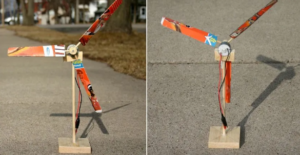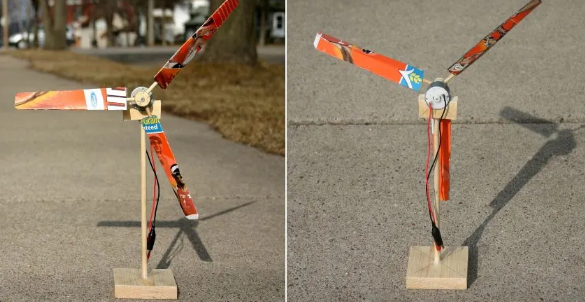DIY Wind Turbine: A Small-Scale Renewable Energy Project
Harnessing the power of the wind is an excellent way to produce clean, renewable energy at home. Building a small-scale wind turbine can be a rewarding project that provides both energy savings and a deeper understanding of sustainable practices. Here’s a step-by-step guide to get you started.
Materials and Tools Needed
- Blades: PVC pipes or lightweight wood.
- DC Motor/Generator: Used to convert kinetic energy into electricity.
- Tower: Metal or wood pole for mounting the turbine.
- Hub: To connect the blades to the motor.
- Nuts, bolts, and screws: For assembly.
- Rectifier: Converts AC to DC power.
- Batteries: For storing electricity.
- Charge Controller: Protects the battery from overcharging.
- Inverter: Converts DC to AC for home use.
- Tools: Drill, saw, wrench set, and screwdriver.
Step-by-Step Instructions
- Design and Prepare the Blades
- Decide on the size and shape of your turbine blades. Longer blades capture more wind but require a stronger structure.
- Cut PVC pipes or carve wood into blade shapes, ensuring balance and symmetry.
- Construct the Hub
- Attach the blades securely to a central hub. Use nuts and bolts to ensure they remain firmly in place.
- Connect the Motor
- Mount the DC motor to the hub assembly. The motor will act as your generator, converting the rotational energy into electricity.
- Build the Tower
- Use a sturdy pole or tower to elevate your turbine. Ensure it’s tall enough to catch consistent wind.
- Secure the tower to the ground using a base or guy wires for stability.
- Install Electrical Components
- Wire the motor to a rectifier to convert AC to DC if necessary.
- Connect the rectifier to a charge controller, and then to a battery bank for energy storage.
- If you plan to power AC devices, install an inverter to convert the stored energy.
- Test Your Turbine
- Place the turbine in a windy location and ensure it spins freely.
- Check the electrical output to confirm proper energy generation.
- Maintain and Optimize
- Regularly inspect and maintain your turbine to ensure efficiency and durability.
- Experiment with blade angles and positioning for improved performance.
Safety Tips
- Always use protective gear when working with tools.
- Ensure all electrical connections are insulated to avoid short circuits.
- Avoid placing the turbine near obstacles that could interfere with wind flow.
Benefits of a DIY Wind Turbine
- Energy Savings: Reduce dependence on traditional energy sources.
- Educational Value: Learn about renewable energy systems.
- Sustainability: Contribute to a cleaner environment.
Building a wind turbine is a practical and impactful project for anyone interested in renewable energy. With careful planning and execution, you can create a functional system that supports your energy needs while promoting sustainable living.

Also Read :
- Harnessing the Power of the Wind: Future Innovations in Wind Energy
- The Role of Solar, Wind, and Hydropower in a Sustainable Future
- The Role of Virtual Reality in Engineering Education and Training
- Engineering Energy Storage Solutions for a Carbon-Free Future
- Harnessing Ocean Currents: Research into Marine Energy Technologies
